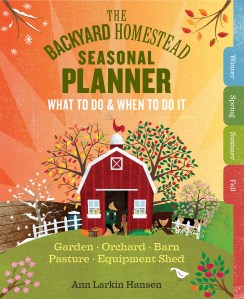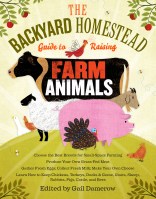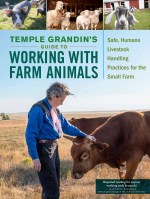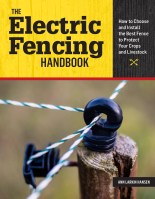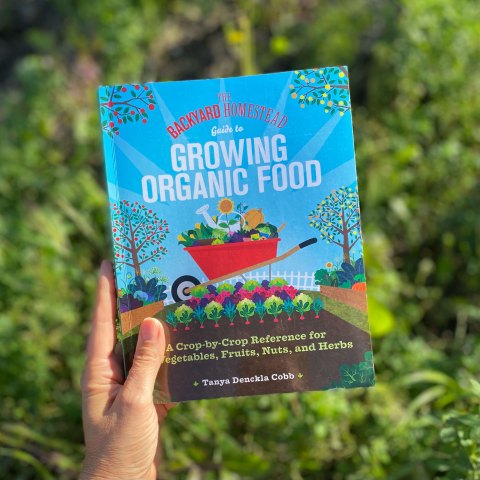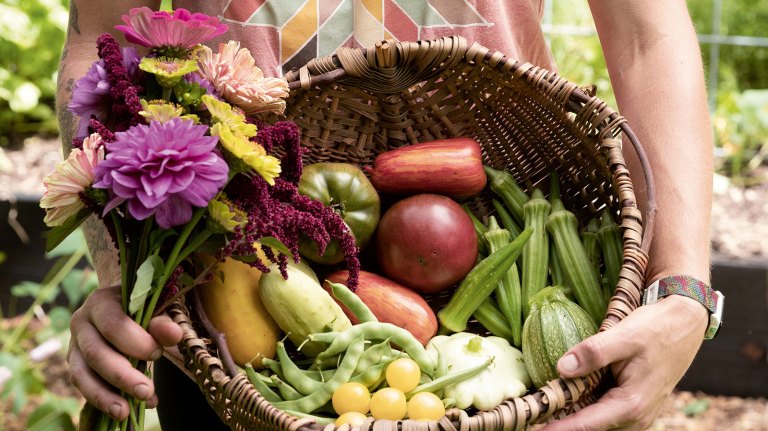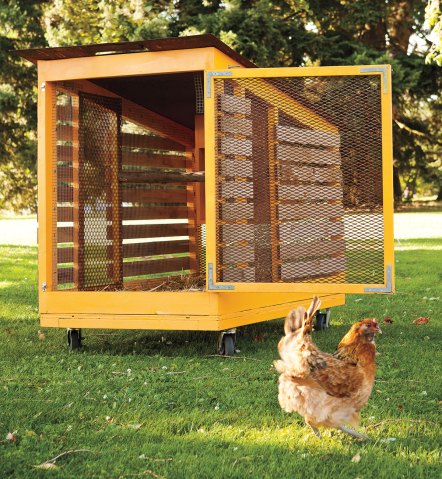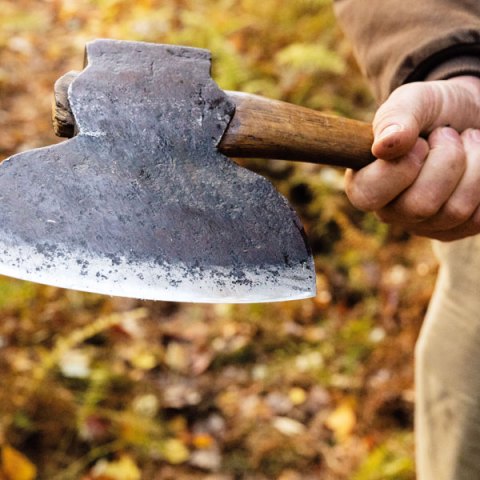On the Homestead: What to Do in Early Fall
As summer slips into fall and the days continue to shorten and cool, seasonal priorities on the homestead should center around the garden, orchard, and barn.
The timing and length of the seasons differ strikingly across temperate North America, but the seasons themselves are similar enough that we recognize the same broad characteristics. Fall is the transition from summer to winter. The days continue to shorten and cool, and wild grasses mature and turn brown as the growing season draws to a close. Though harvesting has been going on since the early greens came to the table last spring, fall is the iconic harvest season, with the traditional crops of corn and pumpkins, nuts, and apples. As the last big crops come in, it’s time to start preparing for winter, storing equipment, readying winter quarters for livestock, and putting the garden and fields to bed. People aren’t the only ones getting tucked in for winter. Rodents are looking for winter homes, too, so set out the mousetraps.
GARDEN
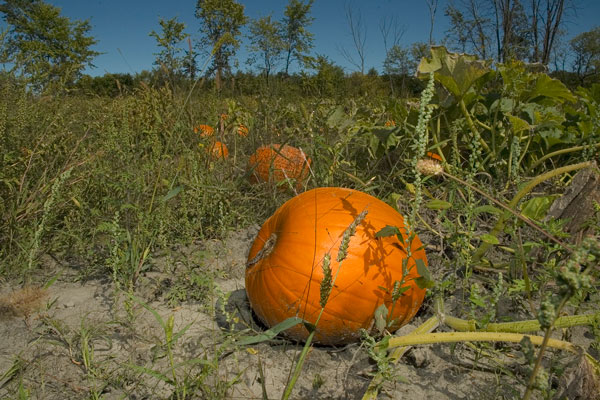
The season is winding down. As vegetable patches or rows are finished for the season, remove what is left of the plants and apply manure, compost, or other recommended amendments before tilling and then planting winter cover crops or applying mulch for winter cover. Leave the hardy vegetables — kale, carrots, and similar crops — until mid-fall, after freezing temperatures stop growth (in warm regions many such plants can be overwintered, especially with a little mulch as insulation). Pumpkins and winter squash will keep better and are easier to harvest after a hard frost has killed the vines. Now is the time to plant garlic. Leave any flowering plants and vegetables until late fall — they’ll help feed pollinators at a time of year when blooms can be scarce.
ORCHARD

Keep the orchard mowed from the beginning of fruit harvest until the grass quits growing for the year. Peaches, apricots, plums, and cherries are done by now, and pears are winding down, but prime grape and apple picking season is under way, and most nuts are beginning. Among berries only cranberries are left to be gathered.
On our farm, we have far too many apple trees for household needs but not enough to make it worth the effort to sell them — a common problem. We solved this by holding an annual apple party, which we schedule for just before or after the first expected hard frost, when the varieties we’ve planted should be at their peak. It’s also usually some of the finest weather of the year. Early on party day, we haul out and clean the cider press and every bucket and basket we can find. As our relatives, friends, and neighbors arrive, we first have them pick a grocery bag or two of the very best apples to take home for fresh eating. Then we break for lunch, after which the serious work begins: moving apples from tree to cider press and apple butter pot. Because deer move through our orchard, apples on the ground are potentially contaminated by their manure, so none of these are used for human consumption — the cattle get them, along with any other fruit not good enough to go in the press or the pot. By the end of the afternoon, the herd is lined up along the pasture fence waiting for the kids to toss them more.
The pomace from cider making and the skins and cores from apple butter making can be fed to livestock, composted, or left in the woods for local wildlife. If you have a game camera, focus it on the apple pile and see who visits.
If the weather holds, we end the day with a picnic dinner and a bonfire in the yard. If it rains, we move the eating and talking inside. Bees and wasps attend our apple party in large numbers, but they seem to be as happy as we are, and in all these years, we’ve only had two stings.
BARN
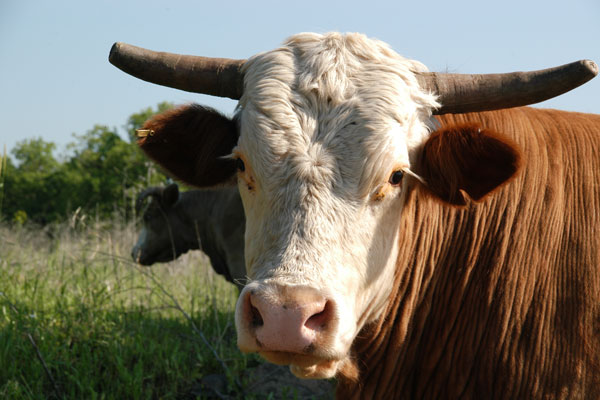
Early fall is a traditional time to wean calves, kids, and lambs so that they have a few weeks to recover before the weather gets chilly and the extras are shipped to market. Beef cattle calves are also vaccinated and the bull calves castrated at this time, if they weren’t at birth. Heifer calves must be given the brucellosis vaccine between 4 and 12 months of age for it to be effective. This must be administered by a veterinarian, who attaches a metal ear tag to the animals as proof. (Sheep and goats most often are given their annual vaccinations 2 to 4 weeks ahead of giving birth, and the pigs don’t need vaccinations, since they’ll be butchered soon.)
Many of the annual livestock vaccinations require booster shots 2 to 12 weeks after the initial shot, depending on the vaccination. After that, a single yearly shot is all that’s needed for most vaccines. It’s convenient to separate mothers and youngsters at booster vaccination time, since they’re being handled anyway. This is also an excellent opportunity to apply ear tags, deworm, and trim hooves if those items are on your to-do list. Beef calves can be castrated at the time of the initial vaccinations, returned to their mothers to help them recover from the stress, then weaned when the booster shots are given. If you plan to keep your young cattle through winter, you can let their mothers wean them — most will do this naturally in late winter, a couple of months before calving again.
When working livestock, the most important thing to remember is to stay calm. Move smoothly and slowly, and don’t yell and start slapping butts. If your animals are accustomed to being tied or to walking through a chute and headgate, the process will go smoothly. If you have an animal that just won’t accept being handled or herded, cull it. A replacement is cheaper than a trip to the emergency room after being kicked, butted, or run over.
Other Homestead Tasks for Early Fall
In the field
- Plant winter small grains.
- Plant vacant fields with winter cover crops.
In the pasture
- As temperatures cool and moisture levels increase, cool-season grasses grow rapidly again for a few weeks. Warm-season grasses shut down for the year. Adjust your grazing rotation accordingly.
- Continue weed control and mow fence lines if you find the time.
- Stockpile paddocks for late-fall and early-winter grazing.
In the beeyard
- Harvest honey for the last time. Leave enough to feed the bees in winter.
In the coop
- Start collecting eggs again as old hens come out of molt and new poults begin to lay.
- Butcher meat chickens that were started midsummer.
In the equipment shed
- Do annual maintenance on small engines.
- Clean, lubricate, and store implements as you finish using them for the year.
In the woodlot
- Cruise the woods to plan where you’ll cut firewood, harvest timber, and thin and prune in the coming seasons.
- Mow trails one last time if needed.
In the wildlife habitat
- Plant winter food plots.
TEXT EXCERPTED FROM THE BACKYARD HOMESTEAD SEASONAL PLANNER © 2017 BY ANN LARKIN HANSEN. ALL RIGHTS RESERVED.
Author Ann Larkin Hansen sets the priorities for each area of the farm, including the barn, garden, orchard, field, pasture, and woodlot. For every critical turn of the year (12 in all), Hansen provides an at-a-glance to-do list along with tips and a more in-depth discussion of key topics for the season. Easy-reference charts, checklists, and record-keeping sections help you keep track of it all.
Also available in this series: The Backyard Homestead, The Backyard Homestead Book of Building Projects, The Backyard Homestead Guide to Raising Farm Animals, and The Backyard Homestead Book of Kitchen Know-How.
